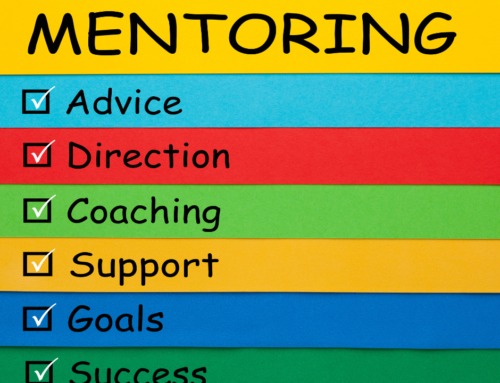What motivates your staff to do their best at work?
It’s a question that has fascinated people for generations…
I ask it in our Leadership and Management Skills Training workshop and it’s always interesting to hear the answers shared by the participants.
Much research has been done and continues to be done in order to glean ideas and find answers to this question. One of the most useful books I’ve read on the topic is Daniel Pink’s, DRIVE: The Surprising Truth About What Motivates Us.
The book discusses the three main elements of human motivation that Pink found as a result of his research. The elements relate to a desire for Autonomy, achieving Mastery, and realizing a sense of Purpose.
In our workshops, the various shared answers consistently touch on these three elements, although they aren’t necessarily described in the same way.
People tend to be at their best when they feel authentic. To me, authenticity is experienced when I’m doing something that I’m truly passionate and enthusiastic about, something that I’m competent at, and something that I’m comfortable doing (as well as something that allows me to grow as an individual). Amy Cuddy would call this, ‘being truly present.’
Many years ago, the police department that I worked for had a vacancy in its Emergency Response Team. The leader of the team, Brian, approached me and said, “Phil, we have a vacancy on our team and I would like you to apply.” I replied, “Brian, why would I apply? I hate guns and I can’t shoot.” Brian responded, “But people like you and I’ve heard you can run fast!”
Hardly the most important criteria, I thought.
I never did become a member of the Emergency Response Team because I was never going to be confident, comfortable, or enthusiastic being around and training with firearms every day. Despite Brian’s desire to motivate me to join, if it’s something that I’m not interested in doing, I won’t be at my best.
To truly motivate someone, you first have to find out what drives them.
[bctt tweet=”To truly motivate someone, you first have to find out what drives them.” username=”fioretraining”]
And although each person will have their own particular reason for working where they work and doing what they do, in general, people are motivated by extrinsic and intrinsic motivators.
Extrinsic motivation occurs when external factors are used to encourage people to do what is wanted. Pay raises, time off, bonus checks, and, on the negative side, the threat of job loss, are all examples of extrinsic motivators. Managers and supervisors tend to have significant control over these external motivators.
And, you may have already guessed, that intrinsic motivation is internal. It’s about having a personal desire to overcome a challenge, produce high quality work, or to be on a team with people you like and trust. People who are intrinsically motivated by their work tend to get a great deal of satisfaction and enjoyment from what they’re doing.
Have you heard the story of the three bricklayers? It goes like this: “Once there were three bricklayers. Each one of them was asked what they were doing. The first man answered gruffly, ‘I’m laying bricks and earning money to put food on the table and roof over my head.’ The second man replied, ‘I’m putting up a wall and becoming the very best bricklayer there is.’ But the third man said enthusiastically and with pride, ‘I’m building a cathedral, so people can come and worship.'”
Which bricklayer are you? If you’re in a leadership position, do you know why your employees do what they do?
Are they there for the paycheck, to learn and utilize a skill, or is their purpose something higher?
We need to feel growth as a result of our daily experiences, and so one of the primary methods to motivate employees is to find ways for them to experience and acquire new skills. Sometimes another person, such as a manager or supervisor, is better able to see how capable we are—and oftentimes, we are more capable than we think. That’s why athletes and sporting teams have coaches and managers whose role is to motivate others and to encourage them to achieve results far greater then their initial individual expectations.
Another important book based on massive empirical research is Paul R. Lawrence and Nitin Nohria’s 2002 book, Driven: How Human Nature Shapes Our Choices. It suggests that there are four basic emotional needs, or drivers ,which, when understood by organizations and focused on in terms of the workplace experience, result in massive improvement for employees.
These four ‘drivers’ that underlie human motivation, are hardwired into our brains and revolve around:
- The drive to acquire things that bolster our sense of well-being
- The drive to bond and connect with other people
- The drive to comprehend and make sense of the world around us and how we fit into it, and
- The drive to defend (which has its roots in the basic fight or flight response and manifests itself in the workplace, not just as aggressive or defensive behaviour, but also as a quest to create environments that have clarity in goals and intentions that allow people to express their ideas and opinions)
In order for organizations to meet these drivers of human motivation, they must endeavor to create an environment that enhances the experience of their workers.
Supervisors who micromanage or specialize in a ‘do as I say and not as I do’ style of leadership, end up doing damage to their employees’ experiences. After all, employees are motivated by having a sense of autonomy in their work and they want to be trusted by the people that they are working for. They are also motivated by understanding why their work is important and how they fit into the big picture of their organization’s existence—essentially, what impact their work has on others.
When we work with organizations to help them find ideas to improve motivation, we simply ask them: What do you think would increase your motivation?
Outrageous, I know! Sometimes the answer exists right in front of you…
But trust me, there are tried and true philosophies behind this. We use elements of Edward De Bono’s Thinking Hats philosophy to ask employees how things could be improved within their working environment and lead to an increase in engagement and motivation. It’s essentially a brainstorming session designed in a unique way that I was introduced to when completing my Master of Arts in Leadership and Training degree at Royal Roads University. I have to say that it works incredibly well.
Without fail, when we ask employees for ideas on how the organization can improve their motivation and engagement, they reply with suggestions regarding relationships and communication between employees and supervisors.
Some of the responses look like this:
- Clarifying roles and responsibilities in the workplace
- Increasing efforts to work collegially together
- Increasing communication between team members
- More group socializing events
- More opportunities for employees to gain additional responsibility
- Ensuring that employees treat each other respectfully
- Increasing teambuilding and connection opportunities between staff
- Increasing people’s understandings of their role and the impact of their work
- Opportunities to increase peer to peer connections
When we ask for these suggestions to be written in the form of actionable items, the result is often a shopping list of ‘low hanging fruit’ ideas.
Some of the suggestions that we see are clearly not low hanging fruit, but would require a full-blown business plan to be created in order to justify them, and some of the suggestions would require inclusion in future capital project’s plans. These however, are the exception. The vast majority of the ideas that are shared involve no financial cost at all. What they do require is effort and commitment.
But you don’t need to be at one of our workshops to get the ideas going.
Sometimes we just have to sit with our employees and simply ask: What motivates you to do your best at work?
The article is titled: 3 ways to motivate employees in the workplace.
To my mind those ways are:
- Read some best practice approaches such as those spoken about in the books DRIVEN and Drive.
- To examine some recent research available through reliable sources such as Harvard Business Review and Gallup, and here’s the third suggestion,
- Let’s listen to the responses to the question you are going to ask your team: What motivates you to do your best at work?







Leave A Comment